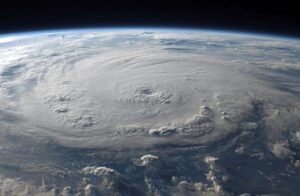 GIS Risk Management: The Key to Enhanced Decision-Making
GIS Risk Management: The Key to Enhanced Decision-Making
Natural disasters can bring unfortunate consequences for communities and habitats alike. They destroy homes, telecommunications infrastructure, and resource supply chains, amidst a slew of other devastating and disrupting impacts. Luckily, GIS has emerged as a critical tool for effective risk management to prevent, or at least more effectively combat, inevitable circumstances. Speed and precision are the name of the game in such circumstances, and GIS risk management makes that more possible, transforming risk management practices to better handle natural disasters, public safety threats, and urban planning challenges.
The Role of GIS in Risk Management
GIS integrates spatial data with analytical tools to provide insights that allow for informed decision-making. For risk management, this means:
- Risk Identification: GIS tools allow organizations to map hazards and identify vulnerable areas, populations, or infrastructure.
- Preparation and Mitigation: Stakeholders can simulate scenarios, model risks, and implement proactive strategies.
- Real-Time Response: GIS enable faster and more coordinated responses during emergencies due to its ability to deliver real-time data visualizations,
- Post-Incident Recovery: GIS supports damage assessments and helps prioritize recovery efforts.
These capabilities have made GIS indispensable across various sectors, from emergency response to urban planning.
GIS Risk Management in Action
Fighting L.A. Wildfires
GIS technology has played a pivotal role in combatting wildfires in the western portion of the United States, most notably in the recent fires across Los Angeles and its surrounding areas in early January 2025. GIS risk management has served as the data backbone for agencies tackling these fires.
During active wildfires, GIS systems map the fire’s spread in real-time while considering other critical data such as weather patterns, vegetation, topography, and evacuation routes. Access to this information then enables firefighter and emergency response teams to allocate resources more effectively, ensuring high-risk areas receive immediate attention. GIS risk management technologies also open critical gateways of communication to the public, disseminating vital information such as evacuation orders and road closures, assisting in the potential to save lives and minimize damage where possible.
Navigating Hurricane Devastation with GIS
Turning the attention towards the East Coast, 2024 brought two major hurricanes to landfall, allocating for billions of dollars in damages. Although GIS risk management systems cannot stop hurricanes, they can help in the response and recovery efforts.
Hurricane Helene, a category 4 hurricane, slammed into Florida and made its way through Georgia, South Carolina, and North Carolina. Responders utilized GIS to visualize the hurricane’s impact, identify areas of severe damage, map out critical response infrastructures such as hospitals and shelters, track real-time weather updates to ensure responder safety and prioritize aid distribution once the storm had passed.
The sheer size of a hurricane and its generation of outer bands, flood surges, tornados, and other phenomena have caused major disruptions for those in its path. Thanks to the implementation of GIS risk management systems, resources and rescue teams can be deployed where they are needed most, minimizing delays and inefficiencies.
Combatting Hazards Before Trouble Hits
The beauty of GIS risk management is it can be employed before an actual emergency takes place, allowing for quicker and more efficient response time when a disaster does occur.
Although mapping is a huge component of GIS risk management, it is not the only factor response teams and other sectors look at. The utilization of GIS to analyze demographic, economic, and climate data helps assess the most systemically vulnerable areas and highlight where resources would be needed most to develop equitable mitigation strategies. This analysis ensures that programs, policies, and strategies are inclusive of the whole community impacted and shed light on specific local needs.
One such example leans towards reducing the risk of avalanches in states such as Colorado, which accounts for a third of all avalanche deaths in the United States. As weather patterns are predictable, scientists use GIS to predict where avalanches are most likely to occur, enabling law enforcement and road agencies to issue warnings and danger ratings to reduce the chance of people being harmed or impacted by avalanches.
The 5 Benefits of GIS Risk Management
The above examples highlight cases where GIS has been a pivotal tool in the prevention, response, and recovery of devastating events. With the aid of GIS, risk management, prevention, and response teams benefit from:
- Enhanced Situational Awareness: GIS provides a holistic view of risks and their potential impacts by integrating multiple data layers.
- Improved Resource Allocation: High-risk areas can be pinpointed to ensure that resources are used efficiently.
- Data-Driven Decision-Making: GIS reduces guesswork by enabling evidence-based strategies.
- Community Engagement: Interactive GIS platforms foster transparency and trust by allowing the public to access critical information.
- Scalable Solutions: GIS tools can be tailored to fit organizations of any size, from local governments to multinational corporations.
Challenges and Future Directions
While GIS is a powerful tool, it’s not without a few challenges. Cost can also be a detrimental factor, as implementing the latest GIS technology can sometimes come at a high price point, proving too expensive for smaller organizations to maintain. Another possible downside is a lack of training, as GIS requires skilled personnel. Organizations may find difficulty in employing such individuals or providing the training necessary to make analytical GIS decisions. All these factors can harm the integrity of data, leading to inaccurate or outdated information, compromising actionable results.
Researchers, however, are hopeful. Advancements in AI and machine learning are being directed towards combating some of these possible challenges and enhancing GIS capabilities. For instance, machine learning models are being developed to predict risks with greater accuracy through automated AI data analysis. Additionally, integrating GIS with Internet of Things (IoT) devices promises to further revolutionize GIS risk management by making real-time data more accessible to retrieve and work with.
Conclusion
By equipping organizations with the advanced and innovative tools they need, GIS risk management is a game-changer. From fighting wildfires in Los Angeles to aiding hurricane recovery efforts, GIS technology has demonstrated its value in mitigating risks and protecting communities. GIS empowers organizations to face the future with confidence, marking it as a key resource in risk management systems.
GeoTel can provide businesses and government agencies with the telecom infrastructure data to assist in GIS risk management. Contact GeoTel’s specialists today to learn more.
 GIS Risk Management: The Key to Enhanced Decision-Making
GIS Risk Management: The Key to Enhanced Decision-Making


